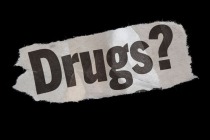
More than 85% of people with addictions who stop using a drug begin using it again within a year. People in recovery are vulnerable to cues formerly associated with drug-taking experiences; for example, seeing friends they took drugs with, or places where they used drugs. Some of these cues gain in strength over time – a phenomenon known as “incubation of craving”. Scientists are seeking to develop interventions that could minimize this process, preventing relapse.
Animal models of incubation have typically focused on how rats respond to cues known as conditioned stimuli that were present when they were previously taking drugs. However, a second type of cue, known as the discriminative stimulus, can also influence relapse. Discriminative stimuli signal whether or not drugs are available and thereby guide drug-seeking behavior. For example, the presence of people selling drugs on a street corner serves as a positive discriminative stimulus, indicating the availability of drugs, whereas the presence of police serves as a negative discriminative stimulus, signaling their unavailability.
Scientists at NIDA’s intramural research labs in Baltimore, Maryland have shown that discriminative stimuli can control the incubation of drug craving, even in the absence of conditioned stimuli. They trained rats to press a lever to get cocaine in a discriminative stimuli environment, where one light signaled the availability of the drug, and another light indicated that cocaine would not be available. After a period where no drugs were available at all, drug-seeking in response to the light that had previously signaled access to cocaine increased, peaked after 60 days, and persisted for up to 300 days (almost half the rats' lifespan). In contrast, the light that signaled no availability of drugs did not increase drug-seeking. This study indicates that discriminative stimuli can be powerful and persistent drivers of drug-craving and provides a model for examining the neural mechanisms of how cues promote relapse.
Study:
- Rajtarun Madangopal, Brendan J Tunstall, Lauren E Komer, Sophia J Weber, Jennifer K Hoots, Veronica A Lennon, Jennifer M Bossert, David H Epstein, Yavin Shaham, Bruce T Hope. Discriminative stimuli are sufficient for incubation of cocaine craving. eLIFE.